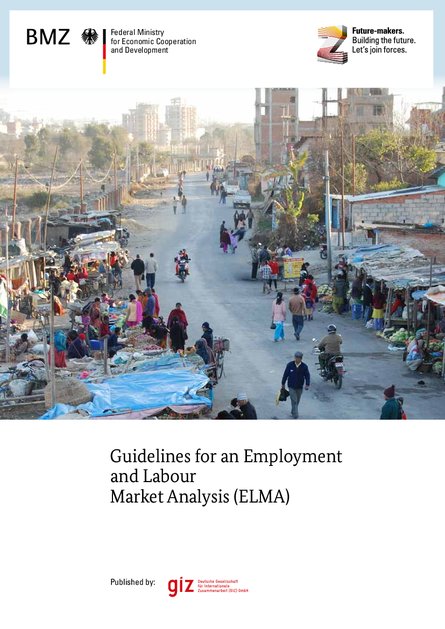
Promoting productive and decent employment is a complex task.To tackle the various facets of this challenge - namely unemployment, underemployment, vulnerable employment and working poor - German development cooperation pursues an interdisciplinary approach towards more and better employment (see Box 1). However, before implementing this integrated, three-dimensional approach to promoting employment, all stakeholders should have a common understanding of the nature of the various factors defining challenges and opportunities for increasing productive employment in a given country. The purpose of the present guidelines for “Employment and Labour Market Analysis” (ELMA) is to address this need for a deeper understanding of country specific challenges to employment generation. ELMA provides a methodological tool for a comprehensive analysis of the labour market and employment situation and its respective underlying causes. It is based on the logic of the integrated approach for employment promotion of German development cooperation. Hence, possible factors are structured and analysed according to their impact on labour demand, labour supply and the matching process of the labour market. The time perspective of the analysis is medium- (2-6 years) to long-term (up to 10 years). The structure of ELMA is flexible enough to deal with very different employment conditions in developing countries. Thus, it can be used for analysing labour markets in low-income countries, transformation countries, as well as in middle income countries.